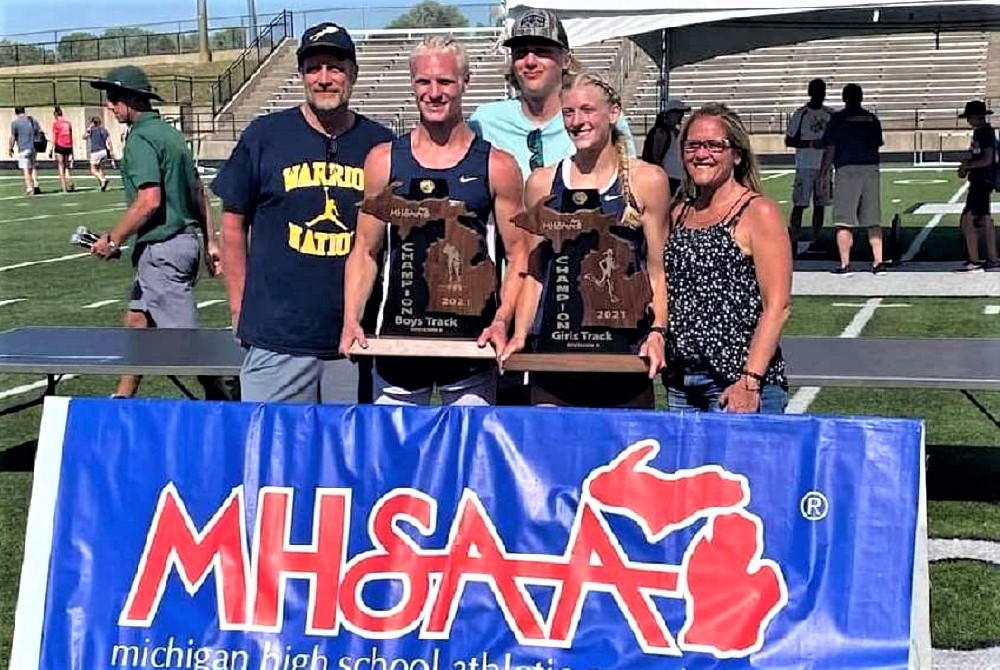
Senior Standout Aiming to Add to Grass Lake & Family Fame
By
Doug Donnelly
Special for MHSAA.com
August 17, 2021
GRASS LAKE – What will Lexus Bargesser do for an encore?
 The Grass Lake senior had an unbelievable junior year, leading the Warriors to their first-ever MHSAA Finals basketball championship, in Division 3, then winning three events to pace Grass Lake’s team title at the Lower Peninsula Division 3 track & field championship meet. She spent her summer on the basketball circuit, traveling the country to compete against top competition.
The Grass Lake senior had an unbelievable junior year, leading the Warriors to their first-ever MHSAA Finals basketball championship, in Division 3, then winning three events to pace Grass Lake’s team title at the Lower Peninsula Division 3 track & field championship meet. She spent her summer on the basketball circuit, traveling the country to compete against top competition.
As she embarks on her senior year of high school, Bargesser is looking forward to having fun, working hard – and bringing home more hardware.
“It was pretty amazing,” she said this summer. “Everything came together and worked out.”
The Bargesser family certainly could have been called the first family of Grass Lake sports over the last few years – in the least for track & field – and Lexus is likely to add a few more highlights during 2021-22. She won’t play a sport for Grass Lake this fall as she’s prepping for basketball season and a hopeful encore to last winter’s achievement. But next month she will begin making college visits and could make a decision before the 2021-22 basketball season begins.
“I don’t really have a timeline,” she said. “I’m looking forward to the season and helping the younger girls on the team grow. I’m excited for it.”
Grass Lake’s Bargesser surge began with 2020 grad Xavier, who’s currently playing basketball at Alma College.
Second-oldest Brennen Bargesser made a splash last school year as a senior both on the basketball court and track, during the spring winning three individual events and running on a first-place relay to lead the boys team to a Finals title as well.
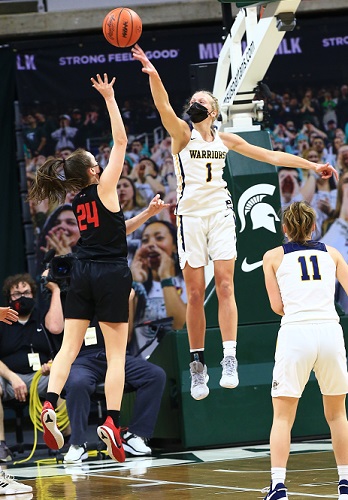 “My older brother and my younger sister are insane athletes,” Brennen said. “I’m the middle child and just wanted to make a name for myself.”
“My older brother and my younger sister are insane athletes,” Brennen said. “I’m the middle child and just wanted to make a name for myself.”
Lexus Bargesser had won the 100 and 200 dashes as a freshman at the 2019 Finals, then burst onto the national prep basketball scene with an amazing summer that saw colleges from across the country start offering her scholarships.
Their parents also are part of the mix. Father David Bargesser coached the Warriors boys basketball team last season and was an assistant to the girls team. Mother Lori Bargesser was the scorekeeper for the boys team.
Sports is the common bond that links the entire family.
“We’re a really close family,” Lori said. “We’ve always just played sports. That’s what we did. We were in the yard from the time I can remember.”
David, who played basketball and golfed in college, and Lori are from upstate New York. They originally moved to Belleville, then landed in Jackson when he accepted a job at the Michigan Department of Corrections. The family has lived in Grass Lake for about 25 years.
“When I got off work, we’d go outside and play basketball or throw the football,” he said. “From the time I can remember, we were always outside playing something.”
Lori said the organized sports started through a local YMCA.
“Xavier was probably 3 or 4 years old,” she said. “David helped coach. Ever since they started, they were always in at least two sports. It was hectic at times, with practice schedules and everything. It was weird when one of them could drive because they could take themselves to practice.”
Xavier, being the oldest, was the first to play organized sports. Brennen soon followed.
“Basketball is very important in my family,” Brennen said.
“As soon as they could walk, they had a basketball in their hands,” Lori said.
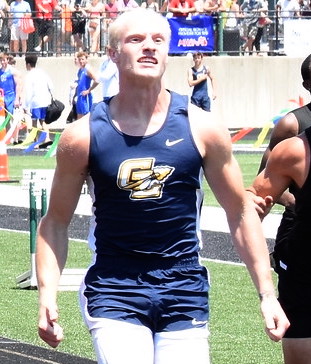 Lexus showed her basketball talent and poise from a young age.
Lexus showed her basketball talent and poise from a young age.
“Basketball was the thing that took off for her,” her father said. “I remember realizing how fast she was on the basketball court. I didn’t realize how fast she was.”
One of the first colleges to offer was UCLA.
“Once one started offering, they all took notice,” David said. “It was a fun two weeks where everyone started calling. She’s would get 4-5 calls in an hour and a half.”
The Bargessers might have had the best day for any one family in state track & field history. Along with both Grass Lake teams winning championships, Brennen won the 100 with a time of 11 seconds, the 200 in 22.6 and the 400 in 49.10. He also anchored the 400 relay that came in first with a time of 44.43.
Lexus repeated as LPD3 champ in both the 100 with a time of 12.12 and the 200 in 25.30. (She had won both in 2019, and the 2020 season was canceled due to COVID-19.) She set an LP Division 3 meet record with a time of 55.54 in the 400, then helped the 400 relay place second with a time of 4:11.54.
Between the two siblings were seven first places, one runner-up finish and two team championships.
“When Brennen won that first race, I was so happy for him,” Lori said. “He had worked so hard. Lexus had won before, but he never had. That was a great moment.”
The seeds of those championships were formed during the spring of 2020 when in place of their season Brennen and Lexus trained together almost every day.
“It’s insane to think (about) what we were able to accomplish,” Brennen said. “She’d run the 100 and win it, then I’d run the 100 and win it. I got so excited for her, then I had to run my race. In the conference meet I jumped (early) and was disqualified. I was nervous at the state meet that I would do that again.”
Lexus and Brennen have always been close. Training together brought them closer.
“We spent all summer running together,” Brennen said. “She was my pacer. She was helping me get my times in.”
Their dad was confident that both could accomplish what they set out to do at this spring’s Finals because he had watched their times closely all summer.
“Going into the year, I was checking times and seeing what other kids were doing,” David said. “I knew both had a chance to do it in all three events. It was definitely the goal. It helped them by training together. Brennen really was into lifting, and I think that helped Lexi get into it. The two of them were always training together, pushing each other.”
 Doug Donnelly has served as a sports and news reporter and city editor over 25 years, writing for the Daily Chief-Union in Upper Sandusky, Ohio from 1992-1995, the Monroe Evening News from 1995-2012 and the Adrian Daily Telegram since 2013. He's also written a book on high school basketball in Monroe County and compiles record books for various schools in southeast Michigan. E-mail him at [email protected] with story ideas for Jackson, Washtenaw, Hillsdale, Lenawee and Monroe counties.
Doug Donnelly has served as a sports and news reporter and city editor over 25 years, writing for the Daily Chief-Union in Upper Sandusky, Ohio from 1992-1995, the Monroe Evening News from 1995-2012 and the Adrian Daily Telegram since 2013. He's also written a book on high school basketball in Monroe County and compiles record books for various schools in southeast Michigan. E-mail him at [email protected] with story ideas for Jackson, Washtenaw, Hillsdale, Lenawee and Monroe counties.
PHOTOS: (Top) The Bargesser family celebrated a championship-loaded Lower Peninsula Division 3 Finals; pictured from left: father David, Brennan, Xavier, Lexus and mother Lori. (Middle) Lexus Bargesser (1) gets a hand up on defense during Grass Lake’s 52-50 win over Kent City in April’s Division 3 Final. She finished with 16 points, 10 rebounds and five steals. (Below) Brennen Bargesser crosses the line first in the 100 at the Finals in June. (Top photo courtesy of the Bargesser family; Brennen Bargesser photo by Jason Ruggles.)
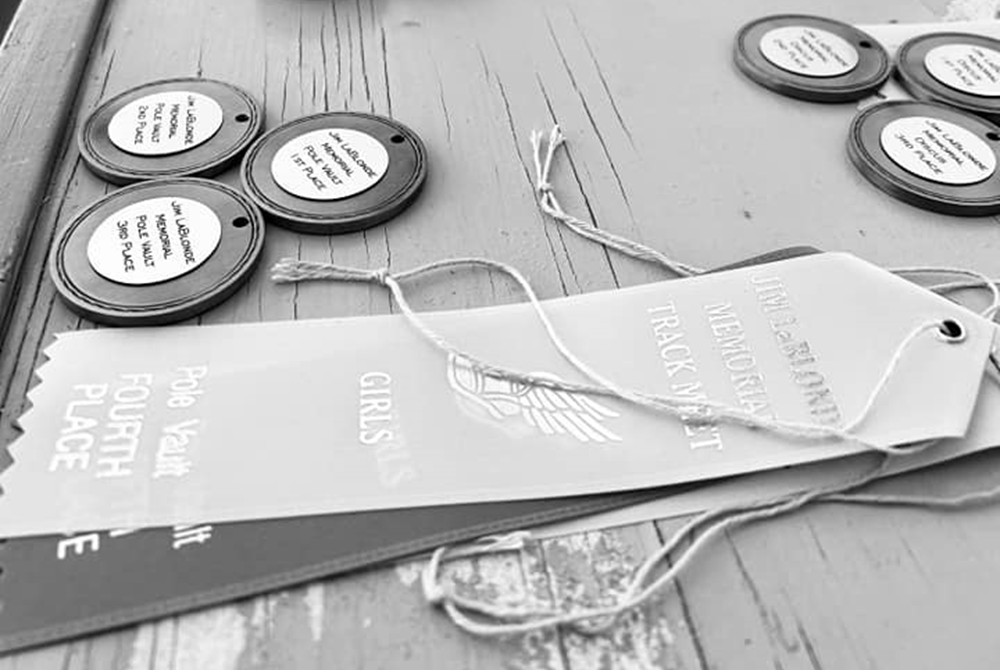
Red Devils Impress as Ironwood Honors Record-Setter with Jim LaBlonde Invitational
By
John Vrancic
Special for MHSAA.com
May 20, 2024
IRONWOOD — The Ironwood track & field teams provided themselves with an opportunity to do a victory lap on a very special Saturday earlier this month.
 Both teams were crowned champions at the first Jim LaBlonde Invitational on May 11 on their 350-meter track during a sunny and mild afternoon.
Both teams were crowned champions at the first Jim LaBlonde Invitational on May 11 on their 350-meter track during a sunny and mild afternoon.
The Ironwood girls scored 126 points, followed by Hurley, Wis., with 43, Ontonagon 37 and Watersmeet with 13. Ironwood’s boys collected 100 points, followed by Hurley at 84, Ontonagon 32 and Watersmeet with seven in a meet held in honor of the former Luther L. Wright High School star athlete who passed away due to an aneurysm on March 31, 2019.
LaBlonde, who was recently inducted into the school’s Hall of Fame, was an all-Upper Peninsula football player and still holds school records in the 100 and 200-meter dashes from his senior year in 1997.
“This is very special to me personally,” Ironwood coach Cecilia Aho said. “Jim was a great person and athlete. I came to Ironwood from Argentina in December 2003 and know the family very well. I had some good conversations with Jim before he passed. This is a great tribute to him. It turned out to be a beautiful day. We had perfect weather and the kids from all four schools were smiling and having fun.
“Jim was well known in the community, not only as a coach, but as a parent. He was a phenomenal runner and football player.”
LaBlonde played football for three years at Wisconsin-LaCrosse and was on the school’s track team for a year while earning his bachelor’s degree in physical education in 2003.
He was a middle school teacher and coach in the Howard-Suamico District near Green Bay, Wis., at the time of his passing.
“He always asked about what was going on in Ironwood and was a good leader,” Aho said. “He would never turn his back on you when you asked him a question. The kids loved him. I wish I would have had a chance to work with him.”
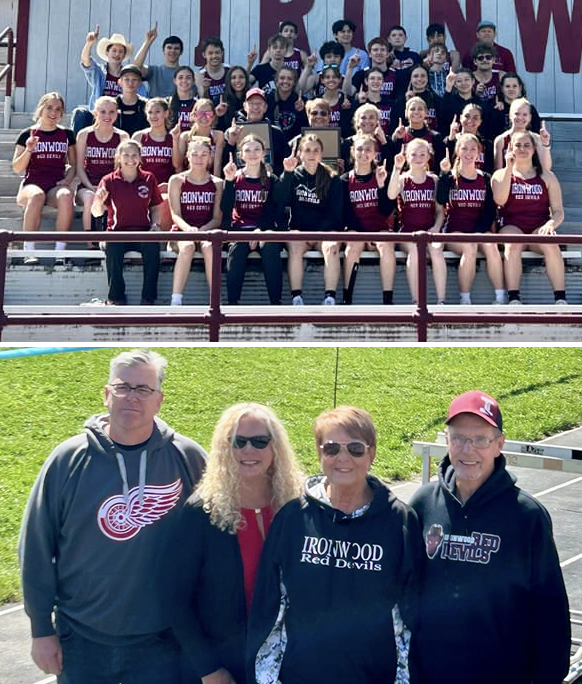 Senior Aubrey Smith topped a field of four Ironwood runners in the 1600-meter run in 5 minutes, 55.69 seconds, followed by freshman Iyla Lagalo (6:54.08) and sophomore Aubrey Balduc (7:21.16).
Senior Aubrey Smith topped a field of four Ironwood runners in the 1600-meter run in 5 minutes, 55.69 seconds, followed by freshman Iyla Lagalo (6:54.08) and sophomore Aubrey Balduc (7:21.16).
Smith also won the 300 hurdles at 52.43, more than six seconds ahead of the rest of the field.
“It was nice to have everyone here,” Smith said. “It’s nice to have a home meet, especially on a Saturday. I think it’s a fun meet. It’s nice to know everyone here. I think this gives me a little momentum going into our remaining meets.”
Sophomore Emma Wardon was also a double winner for the Red Devils, taking shot put (32-11) and discus (87-0).
Ironwood sophomore Logan Holm took the 110 hurdles (20.17) and 300s (48.05), and Hurley had a triple-winner in junior Jeremiah Wallis, who captured the 100 (12.0), 200 (24.52) and long jump (17-3).
Watersmeet junior Thomas Carson won the 400 (54.06), five days after setting the school record (52.31) while placing second in the Welker Invitational at Ashland, Wis. (52.31).
“I strained my hamstring in Ashland,” he said. “It was a little windy up by the big lake (Superior) and there were a lot of good runners up there. I’m probably about 80-90 (percent), but everything went okay. I just wanted to make sure I didn’t overdo it. This is a nice little meet, especially for a Saturday.”
Ontonagon sophomore Violet Amos took the 200 (28.26) and 400 (1:02.03) and was runner-up to Hurley senior Jaana Aukee on a lean (13.65) in the 100.
“I’ve been in the 27s in the 200, but I’m very happy with my time in the 400” Amos said. “This being a little smaller track was probably a factor because the curves are a little tighter. I prefer to run a 400-meter track, although I like the running surface and competition.
“It’s always fun to come here. Our track is getting resurfaced. I’m looking forward to running on it the next couple years.”
Ontonagon coach Brian Amos said he also enjoys going to Ironwood.
“Ironwood runs a nice meet, and we get a chance to see Hurley,” he added. “It’s always nice to run against somebody different.”
 John Vrancic has covered high school sports in the Upper Peninsula since joining the Escanaba Daily Press staff in 1985. He is known most prominently across the peninsula for his extensive coverage of cross country and track & field that frequently appears in newspapers from the Wisconsin border to Lake Huron. He received the James Trethewey Award for Distinguished Service in 2015 from the Upper Peninsula Sportswriters and Sportscasters Association.
John Vrancic has covered high school sports in the Upper Peninsula since joining the Escanaba Daily Press staff in 1985. He is known most prominently across the peninsula for his extensive coverage of cross country and track & field that frequently appears in newspapers from the Wisconsin border to Lake Huron. He received the James Trethewey Award for Distinguished Service in 2015 from the Upper Peninsula Sportswriters and Sportscasters Association.
PHOTOS (Top) Ribbons and medals are set out to be awarded during the first Jim LaBlonde Invitational at Ironwood. (Middle) The Ironwood teams take a photo together, at top, after sweeping the meets. Below, from left, LaBlonde’s brother-in-law Dave Lundin, sister Dena Lundin and parents Marlene and Jim LaBlonde attend the meet. (Photos provided by the Ironwood Red Devil Booster Club.)

